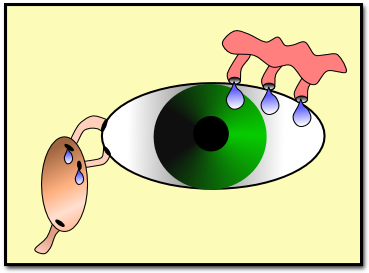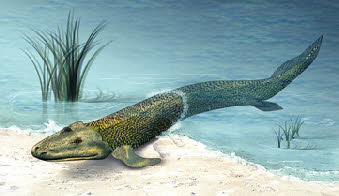
“Behold, the eye of the LORD is upon them that fear Him, upon them that hope in His mercy




Psalm 33:18


CREATION
It’s very important that eyes be kept clean and moist. Failure to do so will result in blindness.

Lacrimal Gland
Lacrimal Canals
Lacrimal Sac
Tears
Lacrimal System
The lacrimal gland, secretes tears through its excretory ducts onto the surface of the eye;
The tears contain a wonder chemical called LYSOZYME which is one of the most effective
antibacterial and antiviral agents known to man. It destroys 90-
As the eyelids are closed the tears are spread over the surface of the eyeball in a 3 layered covering. As the eyelids are closed the lacrimal sac is squeezed flat
As the eyelids open the sac expands and sucks the excess liquid through the two canals into the sac from where it is discharged into the nasal passage. This intricate drainage system means that you don't have tears constantly running down your cheeks. Clever stuff!
Eyeball
The Coelacanth, as we saw on page 5, for obvious reasons was rejected as the missing
link between sea creatures and land dwellers. However, the evolutionist is so committed
to his cause, he has come up with have other fish to take the place of the Coelacanth.
One such creature is Tiktaalik, which showed traits of both fish and tetrapods (four-


Tiktaalik -
Wiki
“This animal was specialized for living in shallow stream systems, perhaps swampy habitats, perhaps even to some of the ponds. And maybe occasionally, using its very specialized fins, for moving up overland. And that's what is particularly important here. The animal is developing features which will eventually allow animals to exploit land.”
I somehow think the words ‘perhaps’, ‘maybe’, likelihood ‘may have’, suggest a good
measure of wild speculation and an over active imagination. It amply illustrates
the maxim we considered previously on page 5 -
“The discoverers said that in all likelihood, Tiktaalik flexed its proto-
Since they spend their lives in water, they have no need for the complex lacrimal
bathing and drainage system that is necessary to maintain sight, but once they think
about venturing onto land they most definitely do need it. Tears bring oxygen and
other necessary nutrients to the cornea, and they carry waste products away from
the cornea, preventing the cornea from becoming infected. They maintain the proper
levels of saline on the cornea to protect the eye and preserve vision. With this
in mind, we need to ask one or two questions. ‘How could the creature survive on
land without it?’ -

Lacrimal Ducts

My eyes are killing me!
Sometimes the eyes of the mudskipper are given as proof that the lacrimal system
evolved. This is not so. Beneath each eye is a water-


Wiki